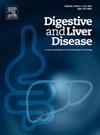Personalized Infection Risk Stratification After Liver Transplantation: Integration of Immune Function and Tacrolimus Monitoring
IF 3.8
3区 医学
Q1 GASTROENTEROLOGY & HEPATOLOGY
引用次数: 0
Abstract
Liver transplantation, while life-saving, presents ongoing challenges related to immune management and infection risk. Traditional laboratory tests inadequately reflect immune function, underscoring the need for more precise monitoring tools. The ImmuKnow assay, which quantifies adenosine triphosphate (ATP) released by activated T lymphocytes, has shown potential in assessing immune reserve but exhibits inconsistent predictive capacity for infections when used alone. This study evaluates the utility of a multivariate model combining ATP levels by blood CD4+ lymphocytes, indicative of immune function, and Tacrolimus doses, which reflect the level of immunosuppressive therapy during the third week post-transplantation, demonstrating high predictive accuracy for infection risk (AUC = 0.9242). Logistic regression revealed that the interaction between ATP and Tacrolimus levels significantly correlates with infection susceptibility, allowed effective risk stratification into high- and low-risk categories, achieving a sensitivity of 100% and specificity of 75%. The integration of these parameters into an interactive, patient-specific risk assessment algorithm facilitates dynamic adjustments of immunosuppressive therapy, aiming to optimize individual patient outcomes. These findings highlight the importance of combined immunopharmacological monitoring for advancing personalized post-transplant management strategies.
肝移植后个体化感染风险分层:免疫功能和他克莫司监测的整合
肝移植虽然可以挽救生命,但也面临着与免疫管理和感染风险相关的持续挑战。传统的实验室检测不能充分反映免疫功能,因此需要更精确的监测工具。immunoknow测定法定量活化T淋巴细胞释放的三磷酸腺苷(ATP),已显示出评估免疫储备的潜力,但单独使用时对感染的预测能力不一致。该研究评估了多变量模型的效用,该模型结合了血液CD4+淋巴细胞的ATP水平,指示免疫功能和他克莫司剂量,反映移植后第三周免疫抑制治疗的水平,显示出对感染风险的高预测准确性(AUC = 0.9242)。Logistic回归显示,ATP和他克莫司水平之间的相互作用与感染易感性显著相关,可以有效地将风险分层为高风险和低风险类别,灵敏度为100%,特异性为75%。将这些参数整合到一个互动的、针对患者的风险评估算法中,可以促进免疫抑制治疗的动态调整,旨在优化个体患者的预后。这些发现强调了联合免疫药理学监测对推进个性化移植后管理策略的重要性。
本文章由计算机程序翻译,如有差异,请以英文原文为准。
求助全文
约1分钟内获得全文
求助全文
来源期刊

Digestive and Liver Disease
医学-胃肠肝病学
CiteScore
6.10
自引率
2.20%
发文量
632
审稿时长
19 days
期刊介绍:
Digestive and Liver Disease is an international journal of Gastroenterology and Hepatology. It is the official journal of Italian Association for the Study of the Liver (AISF); Italian Association for the Study of the Pancreas (AISP); Italian Association for Digestive Endoscopy (SIED); Italian Association for Hospital Gastroenterologists and Digestive Endoscopists (AIGO); Italian Society of Gastroenterology (SIGE); Italian Society of Pediatric Gastroenterology and Hepatology (SIGENP) and Italian Group for the Study of Inflammatory Bowel Disease (IG-IBD).
Digestive and Liver Disease publishes papers on basic and clinical research in the field of gastroenterology and hepatology.
Contributions consist of:
Original Papers
Correspondence to the Editor
Editorials, Reviews and Special Articles
Progress Reports
Image of the Month
Congress Proceedings
Symposia and Mini-symposia.
 求助内容:
求助内容: 应助结果提醒方式:
应助结果提醒方式:


